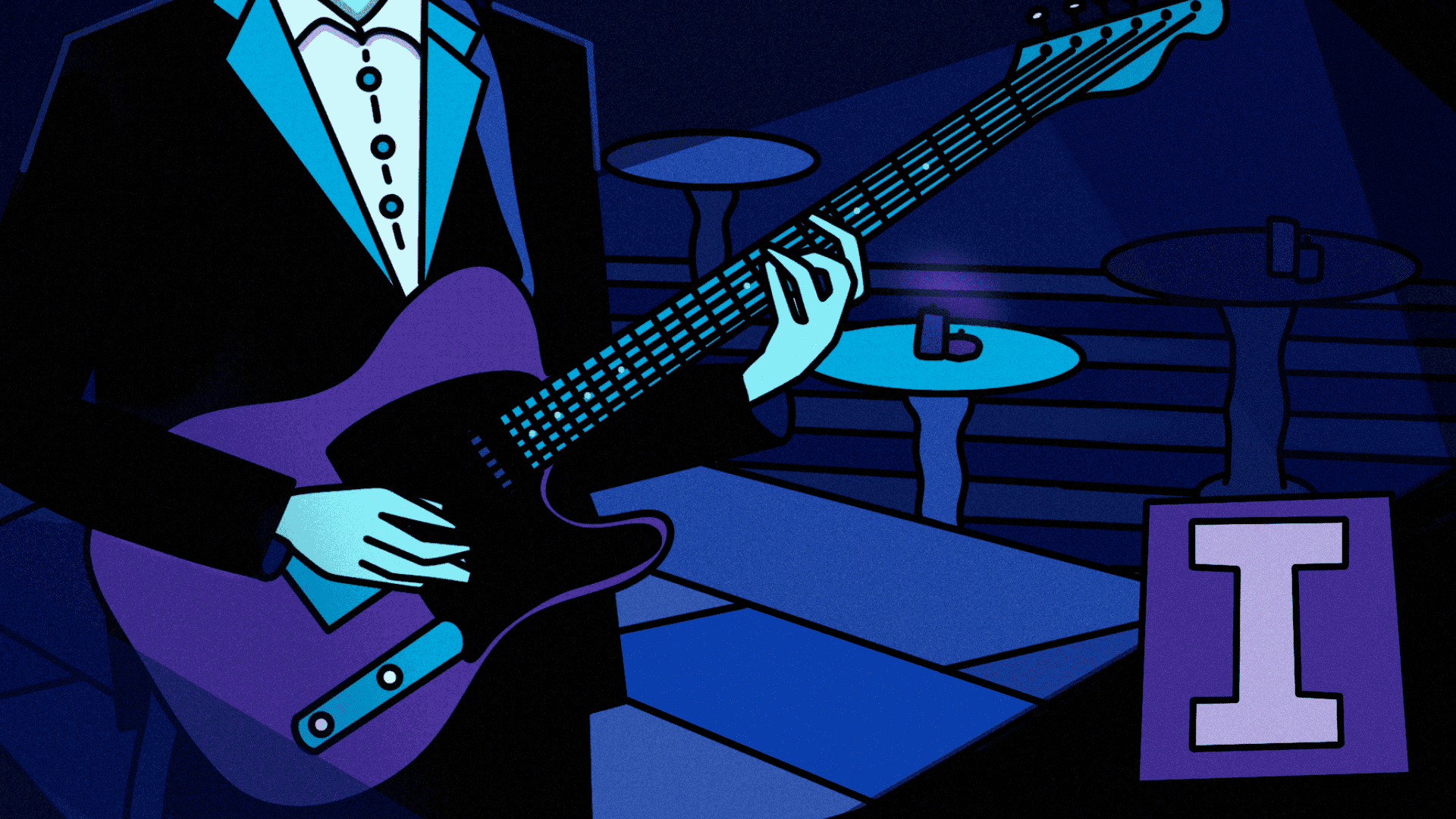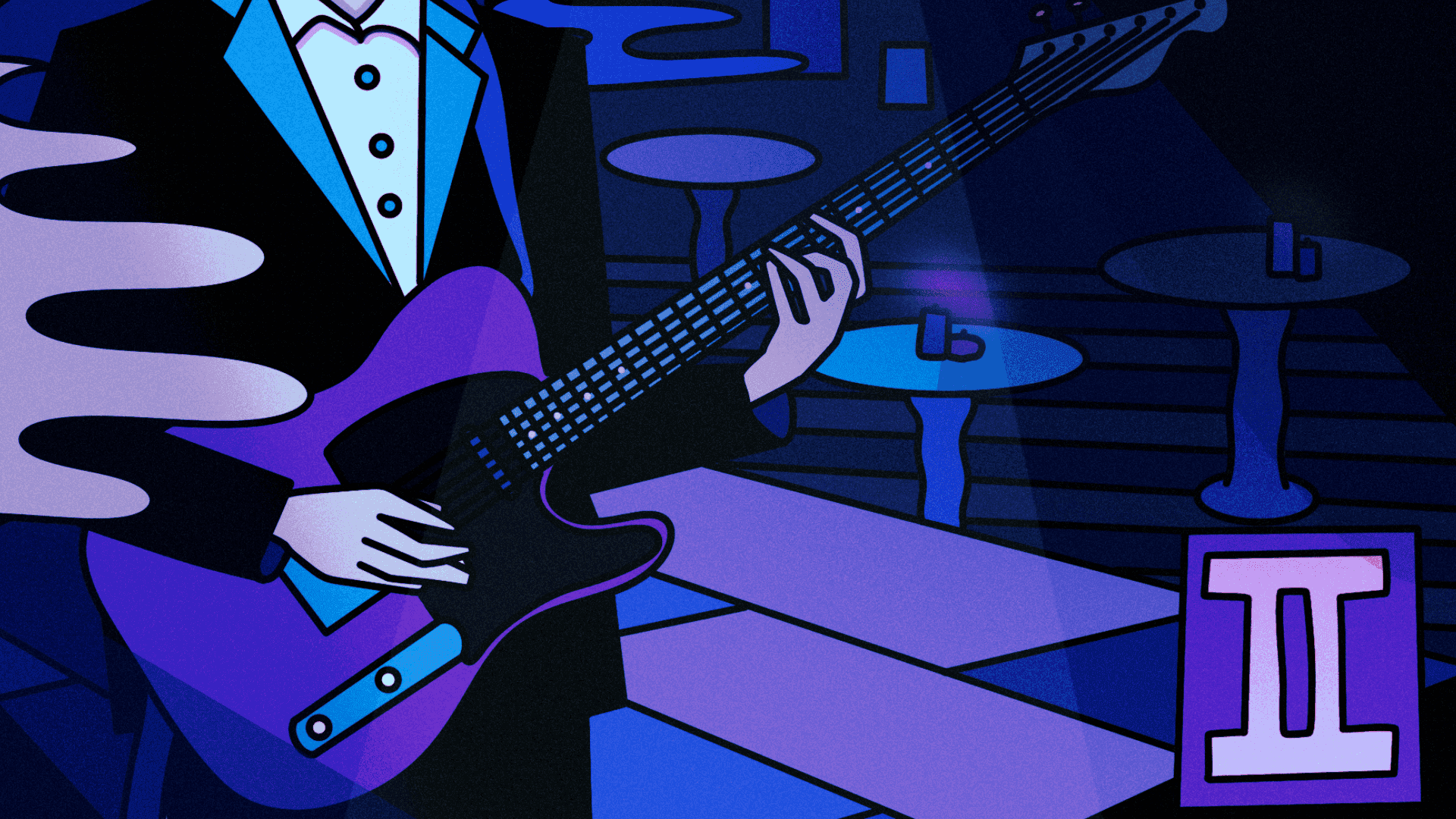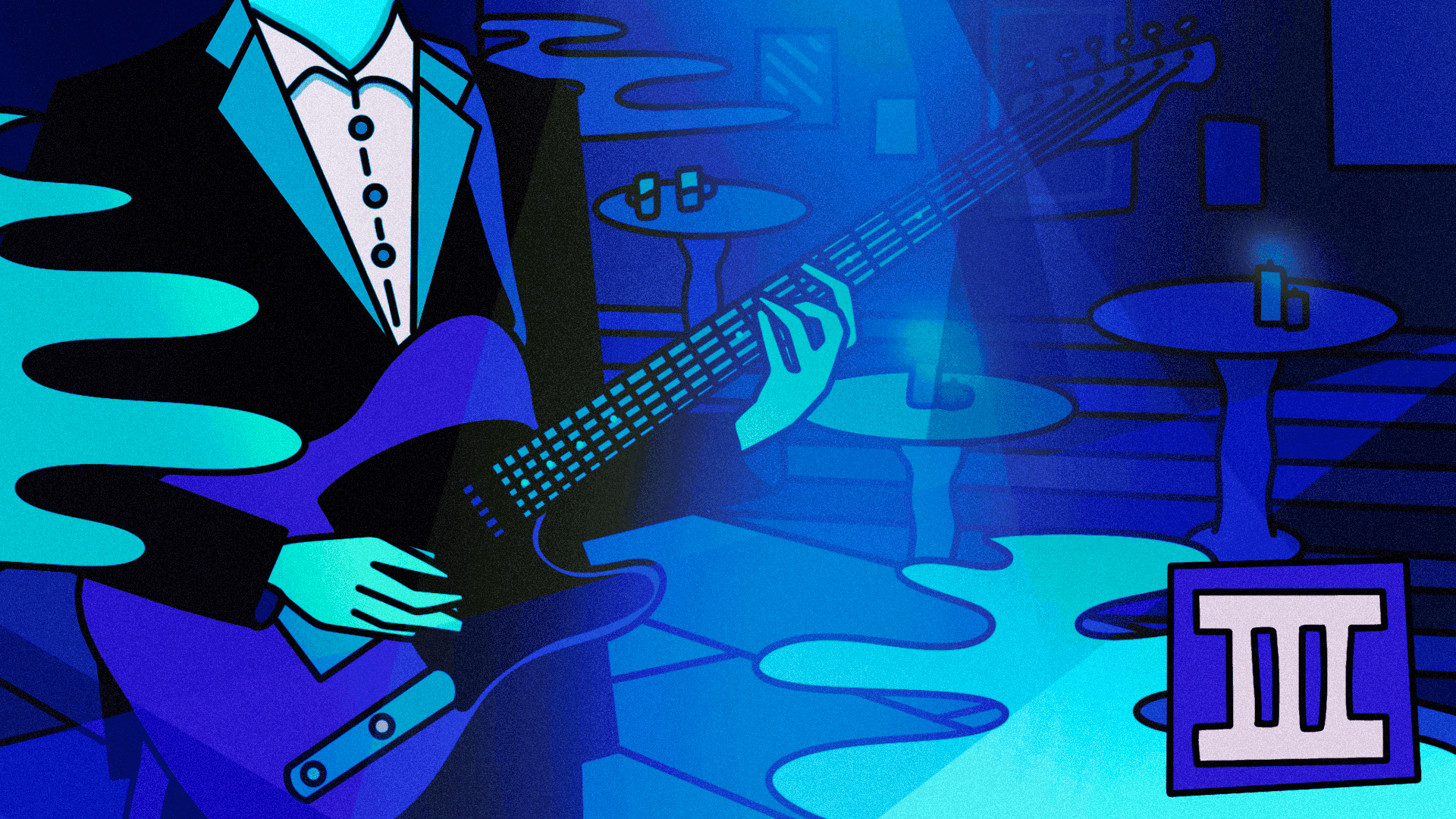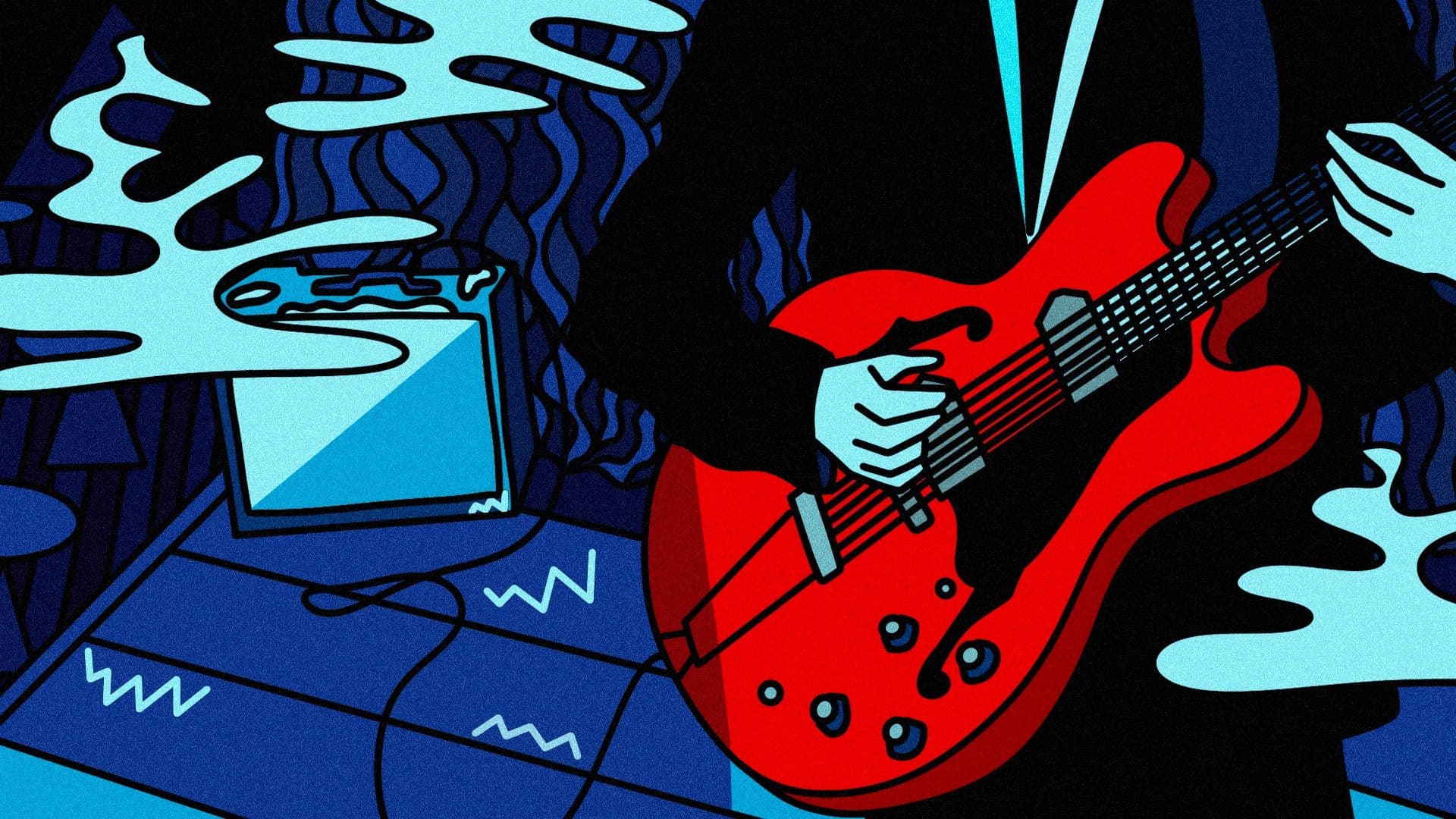So, let's clarify something here. What you have probably learnt in this process is how to play the minor pentatonic. That's often the best place to start, as it's by far the most satisfying sound, and immediately connects you to classic rock, blues, funk and more!
When you first learn the pentatonic scale, it's a true moment of magic. You play this simple scale shape, over a jam track, and immediately it sounds a little bit like you're playing lead guitar! You can go up and down, left and right, side to side… Any note combination, order or rhythm and it will sound pretty decent! There is suddenly some hope and realisation that you might actually be able to play lead guitar one day!
It's truly exciting, and as you then dive deeper into the pentatonic scale, by learning exercises, licks, riffs and various lead guitar techniques to go along side it, your lead playing continues to improve and you grow as a lead player.
“
Dan Holton
“
However, the minor pentatonic is not the end of the pentatonic journey, and this is true especially with blues. In the blues we want to, amongst other things, be equally confident with the major pentatonic, and how the two tonalities meet in the middle.
Defining the difference between major and minor.
If we are to learn how to use the major and minor pentatonic scale in the blues, we first need to be able to separate and define the two scales individually. So, let's start with the minor pentatonic.
The minor pentatonic formula, like any other scale formula is based on the major scale. So in the case of the A minor pentatonic, we first need to take our A major scale of A B C# D E F# G# A. From that we'll take the root, b3rd, 4th, 5th & b7th degree. That is the formula for the minor pentatonic, and when applied to the major scale, we get the notes A, C, D, E & G.
Visually, in terms of a scale shape, that looks as shown below. On the frets we've drawn the intervals rather than fingers, as that makes it very clear as you work through the scale.
Now to the major pentatonic. In our case, when applying this all to blues, we want the same key of A. The difference now is that we will be using the A major pentatonic rather than A minor. In the case of the major pentatonic, we need to take the root, 2nd, 3rd, 5th & 6th degree of the A major scale. This gives us the notes A, B, C#, E & F#.
Visually, in terms of a scale shape, that looks as shown below. Again, on the frets we've drawn the intervals rather than the fingers. I have deliberately used the second shape of the pentatonic here, as it fits in the same area of the fretboard as the A minor pentatonic box 1 above. Our ultimate goal is to overlay the two!
Why do these both work in blues?
Let's now spend a minute talking about the why! It's not the most important thing of course, the most important thing is the sound and the experience of using these ideas over blues tracks, but the why can help the brain and the feeling of understanding it all. The way I like to think of it, is that the blues is based around dominant chords, and the dominant chord is the access point to this crossover of sounds. Let me try and break that down a little further.
In the dominant chord you have a root, 3rd, 5th and b7th. Let's compare those notes to the minor and major pentatonics, all based around A. So we're talking about A7, A Minor pentatonic and A Major pentatonic! This diagram should help with this:
As you can see, the root and 5th are common to all elements. In the major pentatonic we also have the 2nd, 3rd and 6th. All built from the major scale, will all sit nicely over the dominant 7th chord as there is no clash at all. The minor pentatonic has the b3rd, 4th and b7th. Well, we use the b7th of the dominant 7th chord as a bit of a gateway to this sound, and the b3rd has a feel of being slightly unresolved, that then resolves when you move to the major 3rd, 5th or root note. In fact, this sound, alongside the 6th moving to the b7th, is a real core blues element, as you will come to see!
“
With all this complicated theory said and done, I would simply summarise it by saying the major 3rd of the dominant invites the major pentatonic and the b7th invites the minor pentatonic. The two together create the blues sound that we know and love!
Dan Holton
“
Finally, how do we use this stuff?
Great question, and a much needed question indeed! The simply answer is; with licks! It's one thing to know the basic idea, but another thing to put it into practice with some cool ideas that your favourite blues players default to in every solo. At this point I have a few options for you in terms of courses. The first place I would start is with our Blues Essentials courses, and depending on your level you can decide with which one to start…
If you want to dive straight in and learn a lick using these ideas, we have a completely free lesson on YouTube to get you started! It's a great lesson that forms part of our complete "Blues Licks" course right here on our Guitar Club.
Otherwise if you want to dive into the complete courses, or any of our player study courses, I'll put them below. All of these courses will offer practical ideas for how to use this theory, and the player study courses show you exactly how your favourite players use this theory! Before you know it, you'll be rocking these sweet blues sounds jamming along in your house, live at a gig or just playing to your cat! Keep up the amazing work and we'll speak again soon.
Blues Player Studies
Here are a rage of our incredible blues player studies, all of which will help you master your blues licks and truly understand this major and minor crossover concept a whole lot deeper!
Enjoyed this?
Go even further with a Guitar Club membership!
Unlimited access to all our courses, practice journal, guitar toolbox and more!
Sign up now






